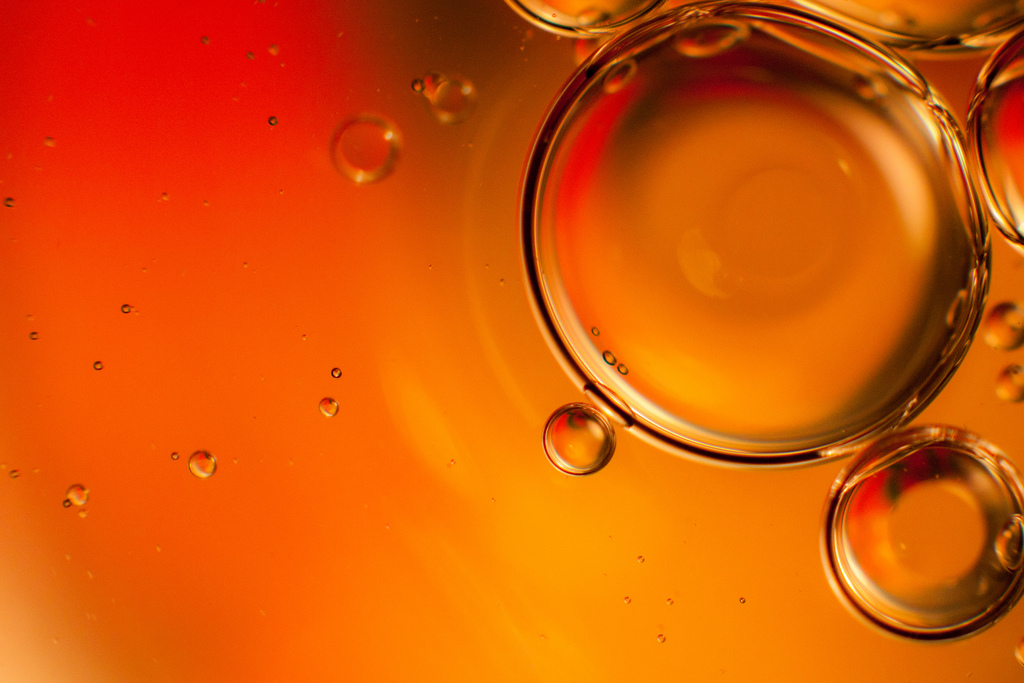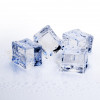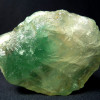Encapsulating enzymes
Interview with
 This week we've been talking about protecting the tiny biological entities which help us every day. What can we do about enzymes, or substances we need to protect in harsh environments like washing liquids or even our stomachs?
This week we've been talking about protecting the tiny biological entities which help us every day. What can we do about enzymes, or substances we need to protect in harsh environments like washing liquids or even our stomachs?
Alex Routh from the University of Cambridge has developed a new technique to produce protective shells around tiny droplets of water into which these helpers have been mixed.
First, water - containing the thing he wants to package and protect - is mixed with vegetable oil and a specially-designed polymer that will form the protective shells.
Shaking this mixture produces millions of tiny water droplets suspended in the oil. Because of its chemical nature, the shell-forming polymer collects around each of the tiny water droplets where they meet - or form an interface with - the oil, completely encasing them.
Adding some alcohol - ethanol - then locks these polymer shells in place, so the oil can be removed leaving the encased water droplets together with whatever was mixed into the water at the start.
Alex showed Kate Lamble how the technique works at the BP Institute in Cambridge.
Alex - So, what we've been trying to do is trying to protect biological things through harsh environments. So, you might think of enzymes in washing liquids or bacteria in probiotic yogurts. The stomach is designed to protect us from nasties that you might eat. So, a lot of bacteria in probiotic yogurts will get killed off in the stomach. If we can make formulation where more will survive, that's got to be a better thing.
Kate - When you start thinking about encapsulation, what's the process by which you work out which device you want to go for? How do you start thinking about it?
Alex - Well, we were trying to think how could we encapsulate biological things and quite soon, we arrived at the idea of water droplets because biological things are happy in water. So, we can put our enzyme or our bacteria into a water droplet and then you want to somehow put a shell around that droplet, and how to put that shell there, we use a technique where we have a huge number of little particles in the water. We make them so that it want to be in the oil. So, they will naturally migrate to the oil interface. So, they will form the shell on their own, create the capsule, and so, protect the enzyme.
Kate - Can we go and see how it's done?
Alex - Absolutely. So, we're in the labs of the BP Institute. We're here with Weijin Gun who's one of our post docs working here and he's going to show us how he makes what we've called colloidosomes which are these capsules that we can encapsulate biological entities in.
Weijin - I'm going to use a pipette to pipette 7.6 mls of sunflower oil, just typical Sainsburys or Waitrose sunflower oil.
Kate - Just the Waitrose sunflower oil will give you slightly higher class of bio encapsulating.
Weijin - Yeah, probably a poshier microcapsule.
Alex - The interesting thing we found is that we had a Japanese visitor come over and then he tried using Japanese sunflower oil and that didn't work.
Kate - Why wouldn't Japanese sunflower oil worked?
Alex - It's a different vegetable.
Weijin - So, I've pipetted 7.6 mls of sunflower oil. Now, I'm adding ethanol.
Alex - The reason we're doing this is that when the little particles go to the interface, we don't want them to just go to the interface. We want them to stay there irreversibly.
Kate - How does the ethanol help the particles lock in place?
Alex - It will change the interaction between the particles so they will just come together.
Weijin - So, when I mixed ethanol and sunflower oil together, I start vortexing the solution for like a minute. So now, you can see slightly cloudy because you get air droplets in, but the ethanol is well dispersed. So, after 5 minutes, you can see there's no more air bubbles in the solution.
Alex - We've got the vegetable oil and the ethanol. And now, we're going to add the water phase with the particles in.
Kate - So, we've got some very - is it slightly thicker white solution going in?
Alex - It looks like milk really.
Kate - Have you made the particles to go in that or is that something that you've got off the shelf I suppose?
Alex - We synthesise these particles ourselves. They're made of polystyrene and another polymer called polybutylacrylate. So, these are acrylic based particles, exactly the same as you would get when you buy wall paint.
Weijin - If you want to encapsulate biological stuff, you can put in your yeast.
Alex - The reason you start with yeast cells is, they're the most robust or biological thing you can. So, it's the first entity to start with. And then we moved into bacteria and enzymes.
Weijin - I add it in into the sunflower oil and this time, we're going to vortex it again for about a minute.
Alex - And we're going to make little water droplets in the oil.
Kate - So, this is just as if I were shaking up a salad dressing or something. You'd form the same thing.
Alex - Just the same as your vinaigrette dressing at home.
Kate - So, once they're mixed, how long do they stay in there in their encapsulated form if we're hoping that they'll go into washing powders and things? Are they going to stay in their little spheres forever?
Alex - Yes, they will stay in there forever because they are bigger than the holes in the capsules. So, they can stay there indefinitely. What we found though is that that worked great for bacteria. But the enzymes were too small. So, when we form the shell, there were always holes in there and the enzymes would leak out. So we have to then put another shell around our first shell and what we did was we put a shell of calcium carbonate around there.
Kate - In my mind, calcium carbonate, limestone. It's quite bad at surviving acidic environments. Is this the same thing that we'd using for stomach acid and things like that?
Alex - For the stomach acid, we found that for bacteria, we didn't need the second shell of calcium carbonate. So, the polymer shell was sufficient because the bacteria were larger so they couldn't get through the holes. You're absolutely right that the calcium carbonate will dissolve in acid and we've used that to release something so you can have a triggered release of your capsule when you put it into acid.
Weijin - As you can see, it's cloudy solution.
Kate - But if we look closely, we'd be able to see those individual water droplets which could if we wanted, contain our biological agent.
Weijin - Yes. If you put yeast in it and you look at it under the optical microscope over time, you can see the yeast cells replicating itself.
Kate - If you're putting something like bacteria inside that and hasn't got a food source, how long can they remain active?
Alex - The shell of the capsule is very porous. So, we can make food go into the capsules to feed the bacteria and products come out. So, you can imagine using these as mini bioreactors where you can hold your bacteria in the site and get products coming out of the droplet.
Kate - We can see that it's cloudy. Certainly, cloudier than it was when it was just the oil and the ethanol. Can we see the droplets within it or are they too tiny for us to visibly see?
Alex - We can certainly put them on a microscope and see the droplets.
Kate - Fabulous! So, let's have a look. So, we've come over to a very impressive looking microscope. So, it is now coming into view? You can see tens of tiny water droplets. As it would look like on your window pane after it's had a bit of a rain, sort of hundreds of tiny water droplets.
Alex - Absolutely and now what we're trying to do is take those water droplets which are very easy to make and preserve them by putting these particles at the interface so that the droplets are stable. So, when you see the water droplets go down your windscreen when it's raining, they'll merge together and form big water lumps. We want to stop that and to keep them as the water droplets.
Kate - So, we've talked about enzymes in washing powder and good bacteria getting to your gut. Are there any future applications that you'd like to get into?
Alex - The application we'd like to get into would be oral vaccines. So, when you have a vaccine, you have to take an injection to get that into your bloodstream because your stomach will kill the vaccine. So, if you can encapsulate that and get it through the stomach and make it survive that process, that will be a huge benefit to people who don't like injections.
- Previous Freeze drying blood!
- Next Suspending vaccines for transport










Comments
Add a comment